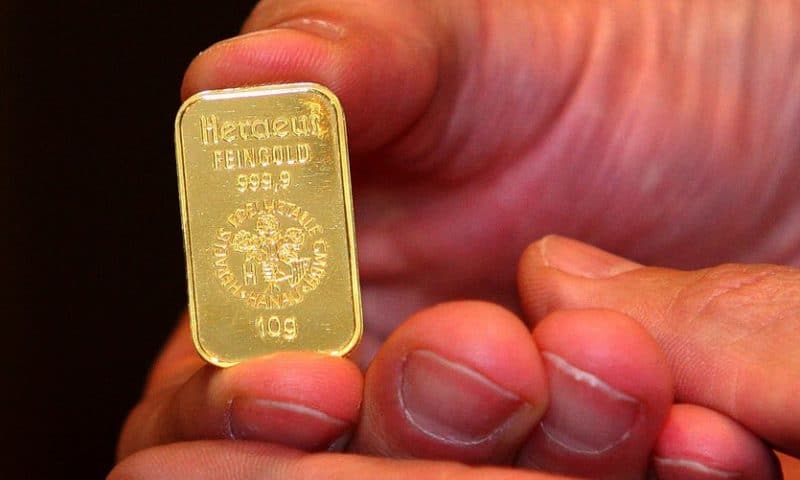Silver heads for weekly decline of nearly 3%
Gold futures settled sharply Friday after the U.S. report on November employment came in better-than-expected, with gains last month of 266,000 new jobs, marking the biggest monthly gains since January and reaffirming the health of the domestic economy.
Prices for the metal “crumbled” as “hiring in the United States roared back to life in November,” said Lukman Otunuga, senior research analyst at FXTM.
The data provided support for the U.S. dollar and reduced bets that the Federal Reserve may cut interest rates again soon, so “gold remains in the direct firing line,” he told MarketWatch. Benchmark U.S. stock market indexes also climbed, dulling haven demand for gold.
February gold GCG20, -0.04% on Comex fell $18, or 1.2%, to settle at $1,465.10 an ounce, while March silver SIH20, +0.17% gave up 46.3 cents, or 2.7%, to $16.596 an ounce. For the week, gold prices, based on the most-active contract, lost 0.5%, while silver suffered a weekly decline of 3%, according to FactSet data.
The increase in new jobs easily topped the 180,000 MarketWatch forecast, helped by the end of the General Motors GM, +0.65% autoworkers strike which added roughly 50,000 jobs to the payrolls number. The unemployment rate slipped to 3.5% from 3.6% and matched a 50-year low.
“The strong report isn’t enough to push the FOMC into a December rate hike, but it definitely takes any chance of a cut off of the table,” said Chris Gaffney, president of World Markets at TIAA Bank. “Rates are definitely on hold for the foreseeable future. And with many of the world’s major central banks taking their cues from the Fed, global rates will probably remain where they are into 2020.”
In the short term, the jobs data undercuts demand for safe-haven gold and helped to provide a jolt to a stocks, with the Dow Jones Industrial Average DJIA, +1.22%, the S&P 500 index SPX, +0.91% and the Nasdaq Composite Index COMP, +1.00% all moving higher in Friday dealings.
Bullion and other precious metals, however, have been mostly influenced by the latest in trade developments, with remarks from President Donald Trump earlier in the week raising the possibility that a trade resolution to end a nearly yearlong tariff dispute between China and the U.S. could be kicked into next year.
On Friday, China’s State Council began the process of exempting some soybeans and pork imported from the U.S. from punitive tariffs, the state-run Xinhua News Agency said, helping to reignite optimism around a partial deal coming to fruition.
“Gold will continue to get knocked around by the trade headline. So, trading has become a function of the fastest trigger in town and wholly driven by trade talk headline risk,” wrote Stephen Innes, chief Asia market strategist at AxiTrader, in a daily research note.
Among other metals, January platinum PLF20, -0.08% declined 0.2% to $898.90 an ounce, with prices ending around 0.2% lower for the week, while March palladium PAH20, +0.31% added 0.02% to $1,846.10 an ounce, settling up 2% for the week.
March copper HGH20, +0.84% finished 2.3% higher to $2.725 a pound, for a weekly gain of 2.4%.
The SPDR Gold Shares exchange-traded fund GLD, -0.99% was down 1.1% in Friday trading, poised for a weekly decline of 0.2%.

